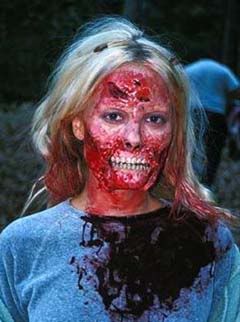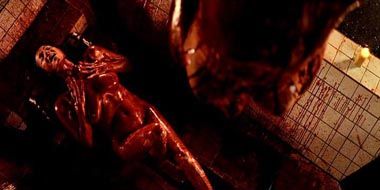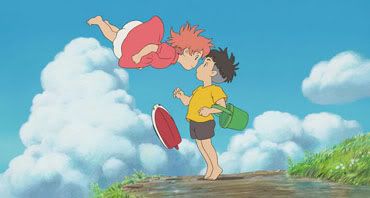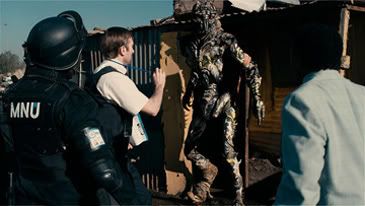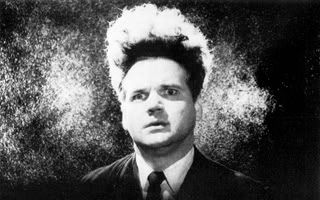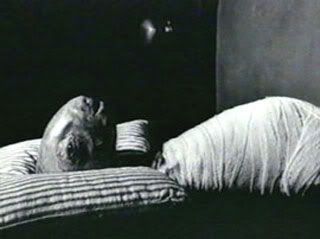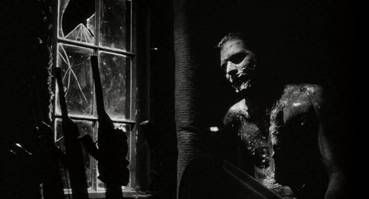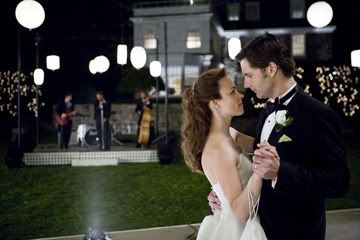

The trailers for "Taking Woodstock" had me thinking this was going to be some awards bait with the indisputably great director Ang Lee ("Brokeback Mountain") taking viewers back to the revolution, grace, and chaos of the infamous Woodstock Music Festival of forty years ago. Turns out this wasn't the case. Instead, Lee sits back too casually for his own good supplying a film that is gentle, humorous, and heartwarming, but is never impactive or even memorable. Any striking moments or images evaporate quickly from the screen and any lingering feelings dissipate after having walked out of the theater. This is too light of entertainment for a massive event that deserves much more. Sustaining a meandering and ambling tone, it certainly doesn't help that the existence of Michael Wadleigh's documentary "Woodstock" emphasizes this movie's shortcomings.
Lee deliberately went for the backstage perspective as we follow the story of Elliot Teichberg (Demetri Martin) who unintentionally sparks the entire musical festival and brings forth the hippie movement. The film really boils down to the personal transformation of Elliot mirroring the cultural transformation taking place around him. It's apparent this is what Lee was shooting for, and he succeeds, yes, but only marginally so. Elliot's coming-of-age, and consequently his coming-out, story gets bogged down and diluted by the traffic jam of everything else going on. None of it connects emotionally, and everything any character says or does onscreen really has no resonance to stir viewers, and such a loss is impossible to ignore.
Elliot is an interior designer who leaves New York to head upstate to help his parents run their dilapidated old motel where they're so strapped for cash that they charge $1 for a towel. Elliot becomes a stay-at-home son because he feels obligated, which prevents him from getting on with his own life. His mother, Sonia (Imelda Staunton), is a loud, oppressive, yet good-hearted Russian immigrant who has an endless fear of poverty. Her ever-suffering husband by her side is Jake (Henry Goodman) who just goes along for the ride. Elliot learns that a nearby town has refused a permit for the music festival, and so, as the head of the Bethel Chamber of Commerce, he offers the permit. He persuades a dairy farmer named Max (Eugene Levy) to let the barrage of hippies come and use his expansive acres of land to host the event. Little did Elliot know what he was creating, and soon he gets bombarded by angry locals and a sea of cars and foot traffic heading his way for Woodstock.
And yet what is a movie about Woodstock without the music? The majority of the focus shies away from focusing on any of the music playing at the concert itself. Any footage of Janis Joplin, The Grateful Dead, Jimi Hendrix, Jefferson Airplane, The Who, name your band, they're all absent. We do, however, get to hear some music echoing in the distance as Elliot stands atop the hill at Woodstock and watches as the crowd before him turns into a sea of waving colors, light, and motion. A cool moment, a moment brought on by Elliot dropping some acid. The spotlight is on how the festival got started, how it got set up, and all that comes with a behind the scenes looks. The cultural period look of the 60s is spot-on, and Lee's attention to detail is impeccable. And while all of that is interesting, the real excitement comes with the actual reveal of the musical event which, once it does finally arrive, is disappointingly brief.
An oddball and colorful cast of characters outshine Demetri Martin, whose bland performance ends up subsiding into the backdrop. Among them are an ex-Marine transvestite named Vilma who volunteers to be the concert security, played entirely straight by Liev Schreiber; the concert organizer who is chill and rides around on a horse, Michael Lang (stage actor Jonathan Groff); Elliot's buddy who returned from Vietnam, Billy (Emile Hirsch), who is strung-out and anxious; and even a couple of concert-goers (Paul Dano and Kelli Garner) who invite Elliot into their psychedelic VW van. But we never follow these characters fully enough, which causes the film's feel of inconsequentiality. With "Taking Woodstock," Ang Lee took grand ambitions and mashed them into a result that appears to be purposely frustrating in thwarting audiences' desires. We stand watching from a hazy distance those "three days of peace and music," but we never end up seeing any of it really at all.

